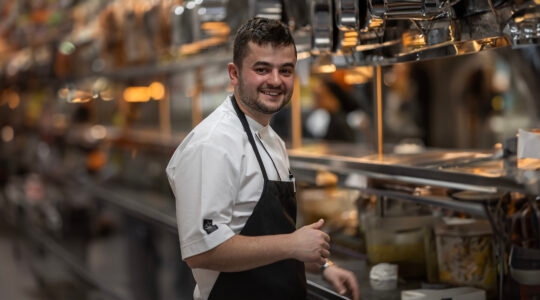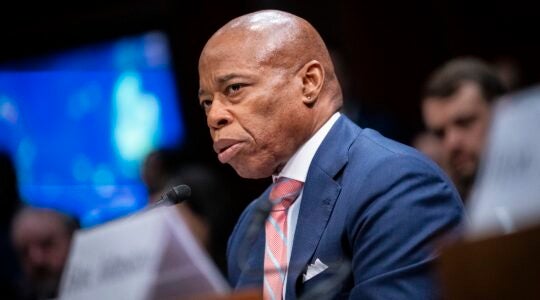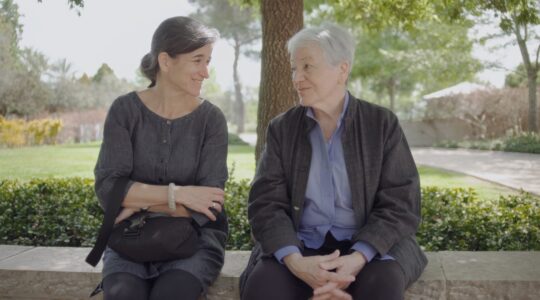Reports that at least two of the four men charged with the attempt to bomb two Riverdale synagogues had become radical Muslims while in prison has refocused attention on this problem.
“I hope this will cause an impetus for change – to see how recruitment is accomplished in prison and what needs to be done in the future,” said Yehudit Barsky, director of the American Jewish Committee’s division on the Middle East and international terrorism.
She said that since 9/11 there have been congressional hearings and reports on the recruitment of potential terrorists from among prison populations.
In 2004, the Office of the Inspector General of the U.S. Justice Department expressed concern that federal prisons might become recruiting grounds for militant groups.
Two years later, a report by George Washington University and the University of Virginia warned flatly that American prisons had become a major breeding ground for Islamic terrorists.
“The U.S., with its large prison population, is at risk of facing the sort of homegrown terrorism currently plaguing other countries,” the study said.
Authorities last week said the four men who allegedly planted car bombs outside the Riverdale Temple and the Riverdale Jewish Center and planned to shoot down military aircraft with a Stinger missile were all homegrown terrorists.
Three are Americans and one is Haitian.
The explosives and the missile were all fakes, provided by an FBI informer who had tipped off authorities a year ago. Since then, authorities said they monitored the suspects’ every move.
Steve Emerson, who frequently writes and lectures about terrorism, said the radicalization taking place in prisons “should not shock anybody. … It has been going on for a while.”
“There have been various cases where converts [to Islam] have come out [of prison] and carried out attacks,” he said. “The problem is that there is no effective monitoring or supervision of the materials that come into the prison because they are couched in religious terms or in foreign languages. And there is almost no monitoring of the imam — full-timers and part-timers — in terms of what they tell prisoners.”
Sarah Elshazly, who has trained law enforcement officers on the subject, echoed that observation.
“There are people who look at prison as fertile ground,” she said, adding that there are some imams who preach hate in prison.
Rep. Eliot Engel (D-Riverdale) said there is a “strain of Islam that obviously is a dangerous strain, and we have to take precautions that our prisons are not a breeding ground of radicalism.”
He said efforts should be made to ensure that the imams who teach in prisons “are not radicals who will rile people up.”
Emerson maintained that the institutes that graduate imams in the United States “have largely become radicalized — they teach jihadism or they are governed by the Muslim Brotherhood.”
The Muslim Brotherhood is the parent organization of Hamas, which is on the U.S. and Israeli list of terrorist organizations.
But Zead Ramadan, president of the New York chapter of the Council on American-Islamic Relations (CAIR), stressed that “Islam is at its core a peaceful religion” and that those who advocate violence in the name of Islam “have misrepresented it.”
He said studies have found that inmates who convert to Islam while in prison “almost never go back to prison.”
“Islam makes them understand what integrity is, what honor is, and the value of human life,” Ramadan said. “Islam makes it clear that God does not like it when humans oppress other people, psychologically or physically. … What happened was an outrage against Islam.”
A spokeswoman for the federal Bureau of Prisons, Traci Billingsley, insisted that the bureau does not “believe there is widespread terrorist-inspired radicalization or recruiting occurring in federal prisons.”
She said that because the potential does exist, however, the bureau takes a number of steps to ensure it does not occur.
And she said there is “no evidence that inmates are being converted to Islam by extremists in federal prisons.”
“Historically, between 5 and 6 percent of the federal inmate population identify themselves as Muslim; this figure has remained quite constant for the past several years,” she said.
Among the steps Billingsley said the bureau takes to prevent the radicalization of prisoners are the following:
n The most dangerous and sophisticated international terrorists are housed under the most restrictive conditions allowed in order to ensure that they cannot influence others, gain reinforcing prestige, or use other inmates to send or receive messages.
n Over the past few years vetting and screening protocols for contractors and volunteers used to provide inmate religious services have been significantly improved. This includes close coordination with the FBI regarding the vetting process.
n The bureau has expanded training for chaplains and other staff regarding the supervision of religious service providers and all religious activities.
n Inmate religious services are always supervised by staff, and no inmate is ever placed in a position of actual or implied religious authority over other inmates.
n The bureau has also taken significant steps to improve screening of religious written materials and has standardized authorized religious clothing items.
In 2007, federal prison authorities removed all but 150 books per religion from prison chapels, fearful that the other books might promote “violence and radicalization.” In response to lawsuits and complaints that First Amendment rights were being violated, the removed books were returned.
Despite these steps, Emerson maintained that federal prison authorities “have not done a good job in vetting the material brought into prisons or the imams who come in.”
Barsky of the AJC pointed out that there are organizations that “send literature gratis to prisons in hope of converting people there.” She noted that sometimes a prison will have no Muslim cleric and “Muslim extremist organizations will take advantage of that” in the nature of the material given to prison libraries.
“In 2008, they inventoried thousands of books, and extremist material far outweighed the mainstream and moderate,” Barsky said. “Some had Muslim Brotherhood ideologies and others had anti-Semitic Muslim theology.
Emerson pointed out that there are countless state and local prisons in which radicalization of prisoners also takes place without any central oversight.
“You have to remember that wardens look for peace and to a large extent, Islamic prisoners don’t act up in prison,” Emerson said. “They are very disciplined. All the wardens care about is what happens inside. After they get out, he doesn’t care; it becomes the problem of law enforcement.”
He pointed out that he found instances in which state prisons had contracted with organizations linked to the Muslim Brotherhood to provide services or religious materials to the prisons.
Barsky agreed, saying: “The targeting of prisoners by extremists is not limited to federal prisons, it’s all over the country. These organizations are looking for converts to their cause and are taking advantage of the fact that they can send material to prisons. No one would say that people in prison should not have religious texts to read, but if you are indoctrinating people to hate others, it goes against the concept of rehabilitation in prison.”
Rep. Peter King (R-Massapequa Park), said he too views the radicalization of prisoners as a “major concern.” He noted that just a few hours before the Riverdale arrests, FBI Director Robert Mueller had been saying that a “disadvantage” of closing the prison at the Guantanamo Bay Naval Base in Cuba was the “radicalization” the terror suspects there could have on inmates in other prisons.
“I have discussed this with prison officials in California and New York,” he said. “It’s an ongoing issue and there are a number of prisons where mostly African Americans are radicalized and convert to Islam and when they are released they are hired by mosques to provide security.”
At the arraignment Thursday of the four suspects, Assistant U.S. Attorney Eric Snyder described James Cromitie, 55, as the leader of the plot, saying he recruited the others. And he said Cromitie expressed a hatred for Jews.
“These were people who were eager to bring death to Jews,” he said.
The other men were identified as David Williams, 28, Onta Williams, 32, and Laguerre Payen, 27. All were held without bail.
The New York Jewish Week brings you the stories behind the headlines, keeping you connected to Jewish life in New York. Help sustain the reporting you trust by donating today.




